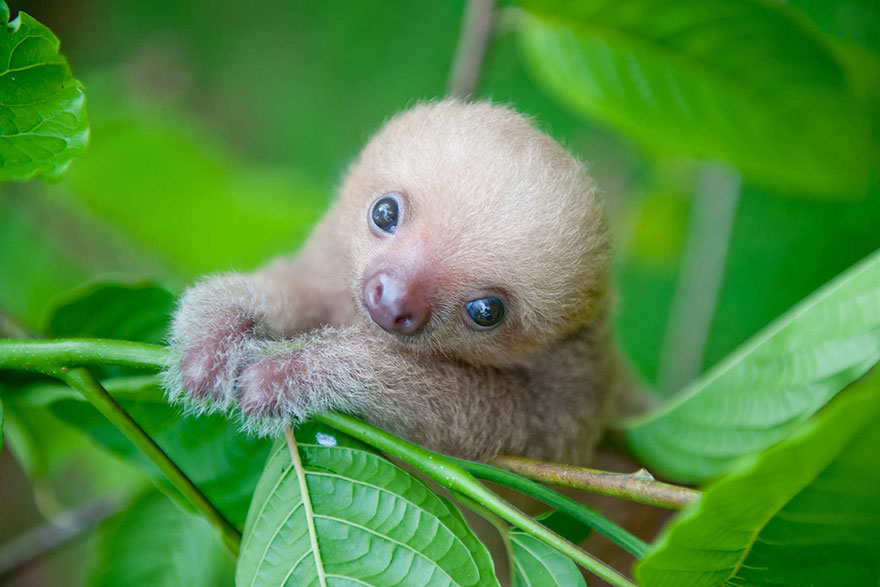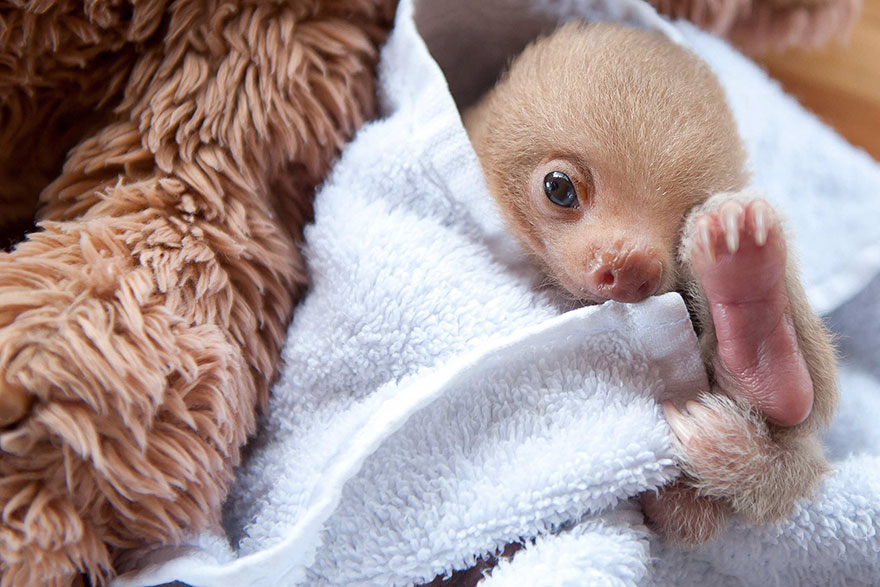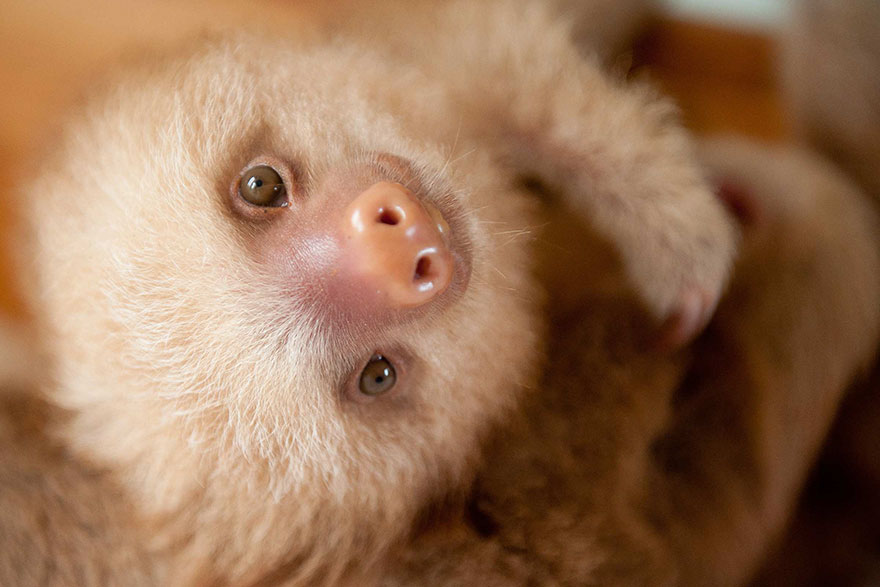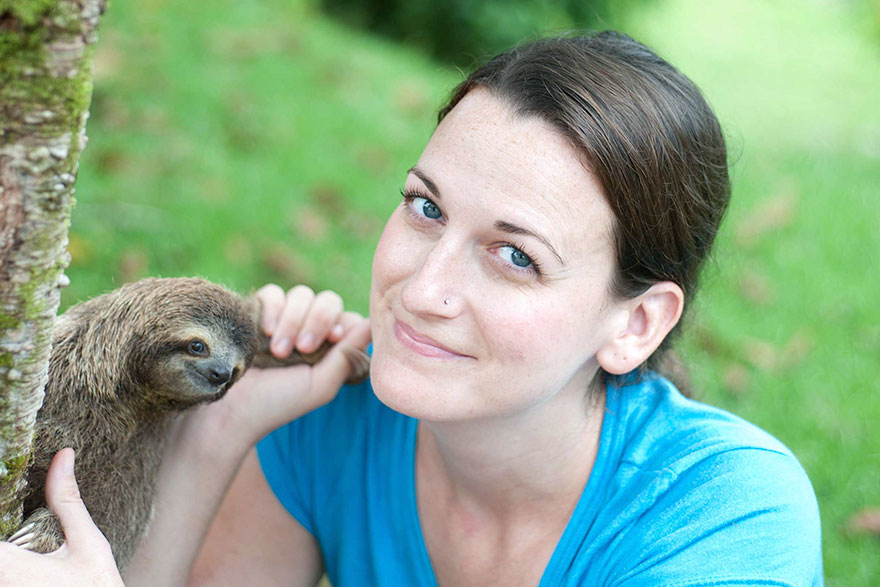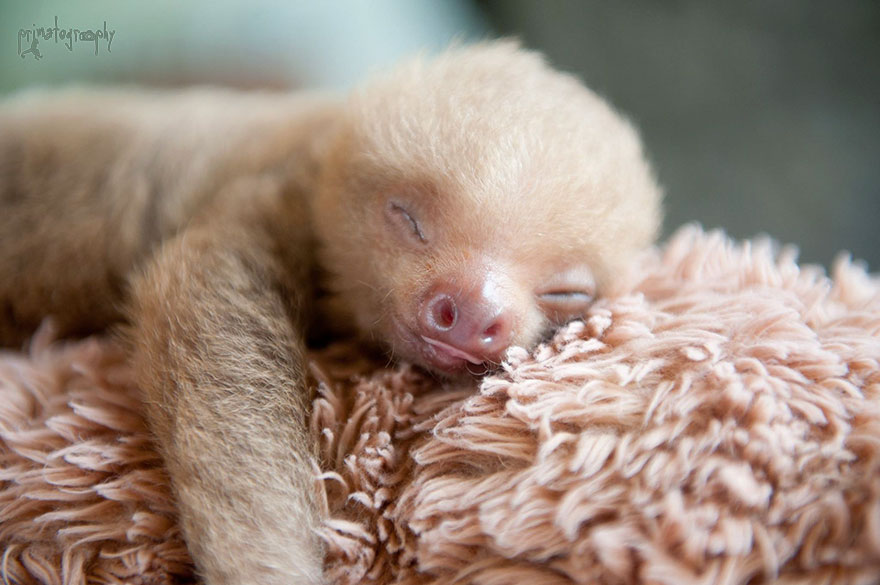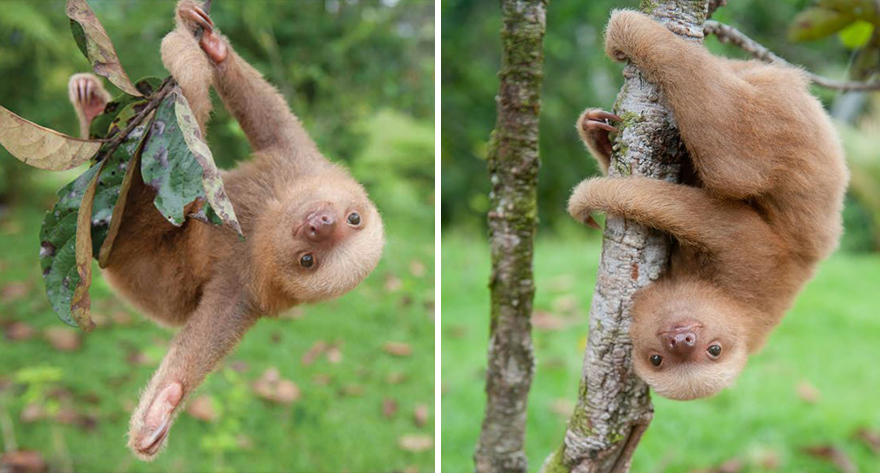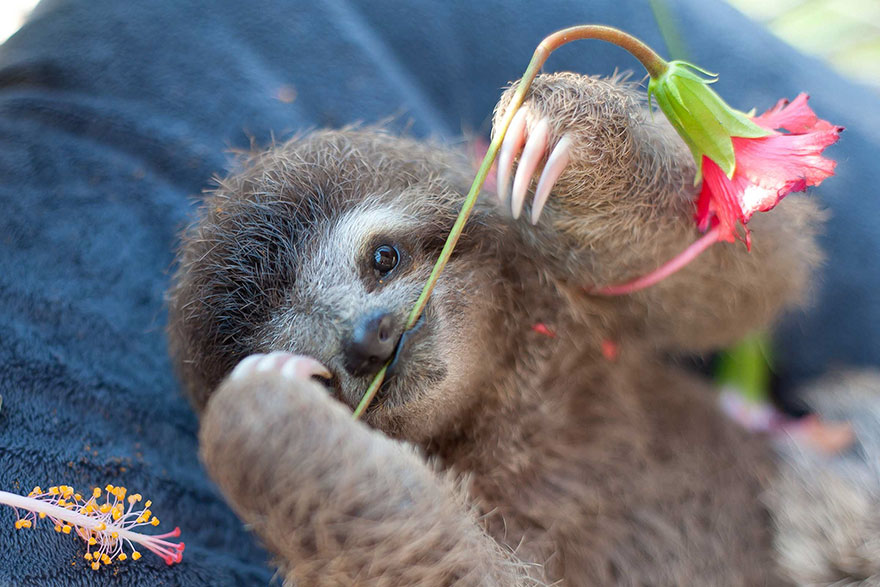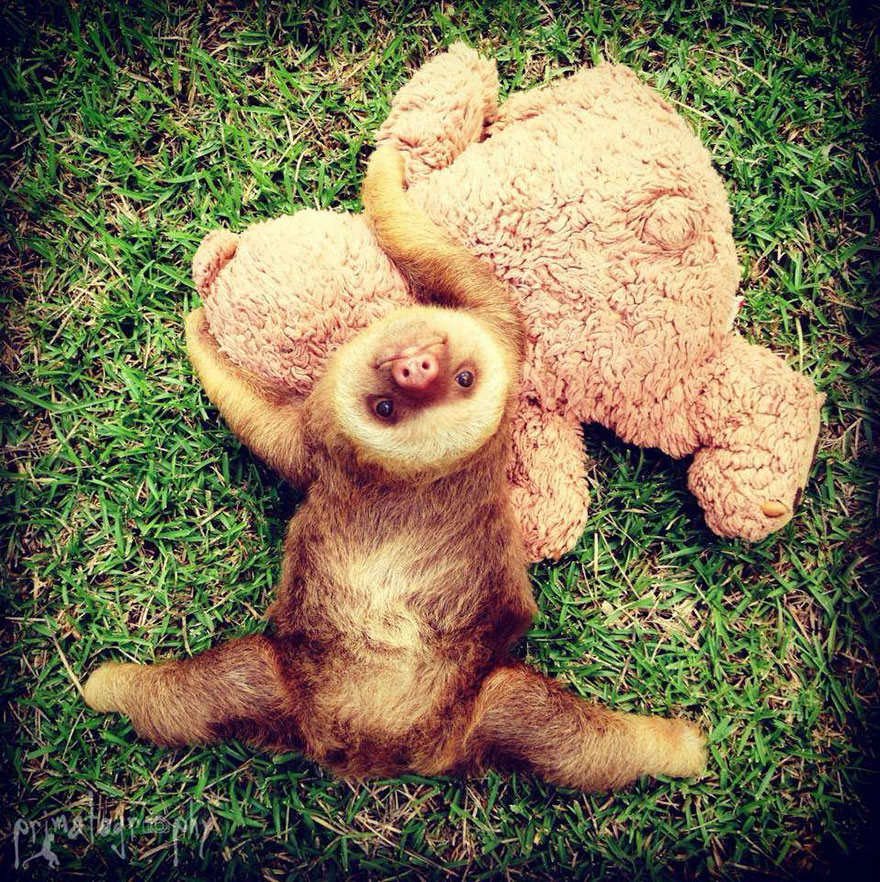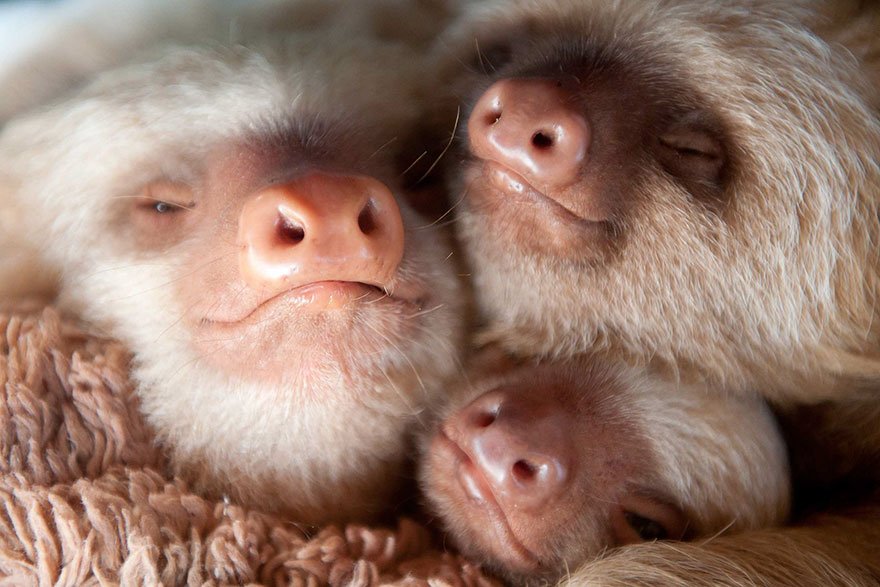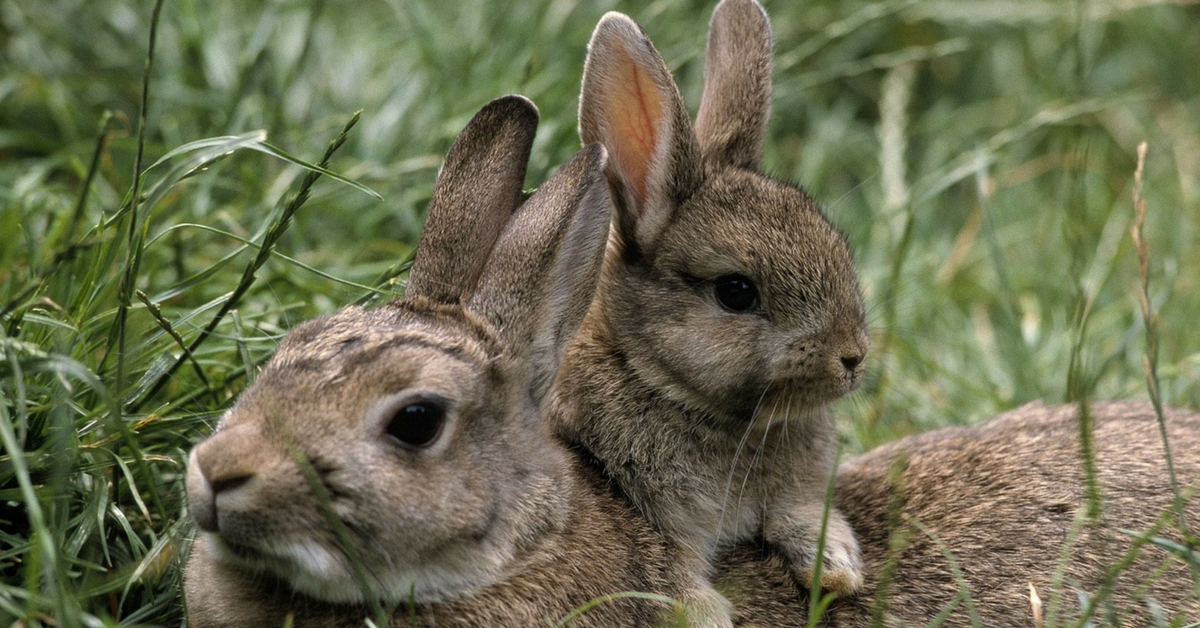Sam Trull is the co-founder of The Sloth Institute of Costa Rica and since 2013 she has been doing everything to help rescue, rehabilitate and ultimate release sloths back into the wild.
"I think one of my favorite things about sloths is that they mind their own business," Trull told the Manhattan Book Review. "I realize that the "˜circle of life' requires all kinds of species of animals, including mischievous monkeys and carnivorous cats, and no offense to those animals that need to eat other animals to survive. But how can I not be drawn to species that just want to eat their leaves, relax in the sunshine and the breeze and have a good scratch?! In addition, they have a very curious and playful side, something most people have never and will never see, but it is definitely the most endearing thing I have ever seen."
Releasing sloths back into the wild is a tough, slow process.
Sloths who were babies in captivity never learned primary survival skills from their mother. Humans still don't know enough about a sloth's biology, ecology, social construct or instincts to make up for what sloths are missing from their moms. Since sloths are notoriously difficult to observe because they are masters of stealth, we don't know much about what is taught and what is instinctual.
"I think there is a big misconception that because sloths are slow and lazy they are okay with captivity ... but that couldn't be further from the truth," Trull told Upworthy.
Continue to the next page to meet Kermie the sloth that changed everything for Trull.
When she joined a small wildlife rehabilitation clinic on the Pacific Coast called Kids Saving the Rainforest she was introduced to sloths.
"I co-founded The Sloth Institute because I wanted to spend all of my energy and time getting my hand-raised babies back into the jungle," Trull said.
This is where she met Kermie, a 2-week-old baby two-toed sloth who had recently lost his mother.
That's when Trull instantly fell in love and assumed the role of Kermie's mother.
She cuddled Kermie, fed him, played with him and never forgot her goal to get him home to the jungle.
Due to the sensitive nature of sloths, they set up "soft releases" to get these animals back to their natural habitat.
During a "soft release" the team sets up a 19-foot-cubed cage near the rehabilitation site where they keep the sloths for several months.
When they appear ready for release, the cage door is left open and the sloths can come and go as they please.
"The goal is that they eventually spend more and more time outside the cage and more and more time eating wild foods until they are 100% wild," Trull said.
In 2015, Trull and her team performed soft releases with Kermie and Ellen, another sloth with came to the center as a baby.
So far, both are doing well in the wild.
Human encroachment is the biggest threat to sloth populations right now.
"Sloths need trees to survive and not just any trees, but the right trees and enough trees," Trull said. "They need a connected and healthy forest."
Threats from tourists, cars and dogs can pose a real danger to these creatures.
"...all things that affect every wildlife species, but especially sloths that do not have the ability to jump away from danger or run quickly across the road," Trull said.
"They have also taught me to never give up ... that the only way to make progress in life is to persevere through each and every obstacle with the knowledge that another one is coming," she told Upworthy.
Sources: Bored Panda / Upworthy

